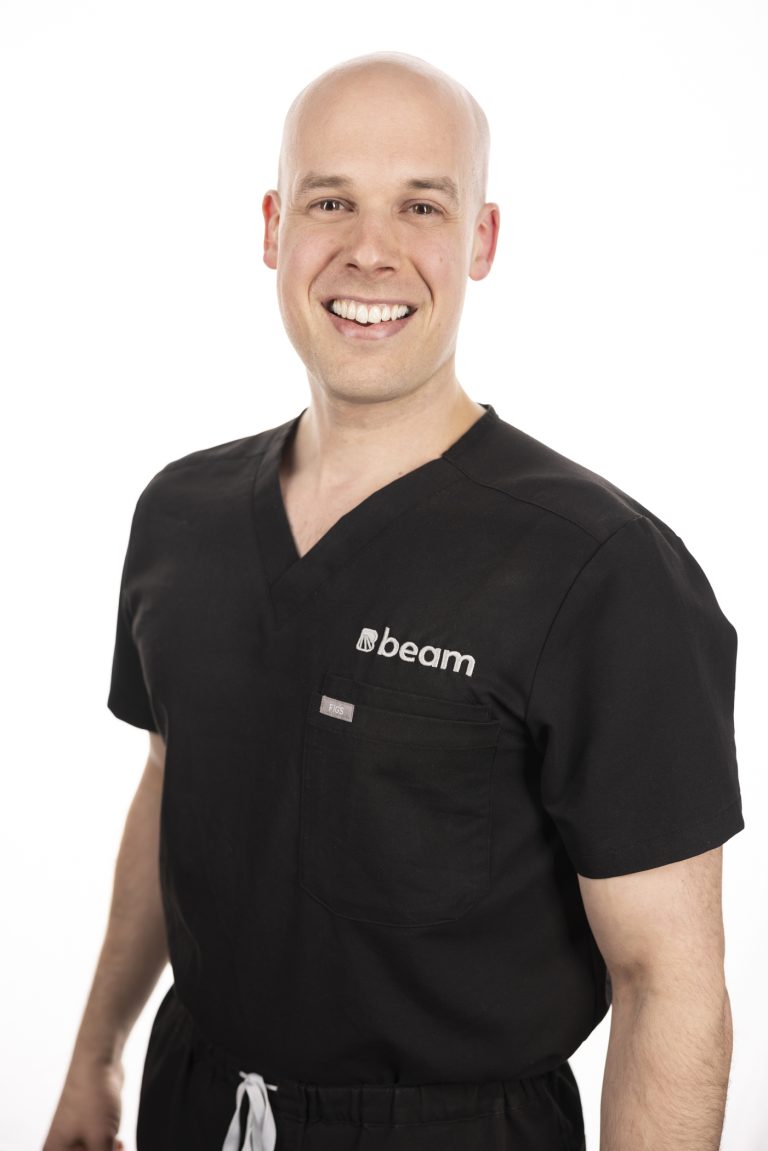

What is a bone mineral density scan (BMD)?
A bone mineral density (BMD) test measures how strong your bones are. At Beam Radiology, we do this using a dual-energy X-ray absorptiometry (DXA) test. This test helps check for conditions like osteoporosis, which can make bones weaker and more likely to break.
If your bone density is low, your bones might be more fragile, meaning they could break more easily—even from minor falls. While regular x-rays can sometimes show weak bones, by the time damage is visible, treating the problem can be harder. A DXA scan can catch bone loss much earlier, making it easier to prevent fractures and slow down the progression of bone disease.
The main purpose of a BMD scan is to diagnose low bone mass or osteoporosis. It can also estimate your risk of breaking a bone in the next 10 years. The scan usually focuses on the spine and hip, but sometimes other areas, like the forearm, may be tested too.
This exam is quick and painless, performed by a specially trained technologist, and analyzed by a radiologist to give you and your doctor the best insights into your bone health.
A DXA scan can be used to:
At Beam Radiology, we focus on providing a personalized patient experience by reviewing your relevant past imaging studies and conducting a thorough intake process to ensure an accurate diagnosis using the latest guidelines. We also use a validated, Canada-specific fracture tool called FRAX to estimate your 10-year fracture risk.
When you arrive, you will need to fill out a medical questionnaire related to the test. You may also be asked to change into a medical gown, as metal in your clothing can affect the scan. Your height and weight will be recorded as part of the assessment.
During the DXA scan, you will lie on a special table for a few minutes while the machine scans your spine and hip, and in some cases, your forearm.
The entire DXA appointment will take approximately 30 minutes. The scan itself will take only approximately 10 minutes.
The DXA scan is a quick and painless procedure that does not require any intravenous injections. It is a safe test that uses a very small amount of radiation—about the same as what you would be exposed to during a flight from Calgary to Quebec City.
There are several risk factors for osteoporosis, including being over 50 years old, low calcium and vitamin D intake, smoking, alcohol consumption, certain medical conditions like rheumatoid arthritis and celiac disease, and medications such as prednisone.
For more information, visit the Osteoporosis Canada website: https://osteoporosis.ca/

If you have any questions or would like to learn more, please
contact us. We look forward to supporting your journey to better health.

Dr. Clerk is a radiologist and fellowship-trained interventional radiologist with a wide array of experience in both interventional pain management and diagnostic imaging. In addition to providing expert patient care, Dr. Clerk places utmost importance on building a compassionate practice that recognizes patients as people, not numbers.
When you choose Beam, you can be confident that Dr. Clerk will stay with you throughout your care journey and help you make smart decisions about your pain and imaging needs.
Université de Sherbrooke
Medical School
Université de Sherbrooke
Residency | Diagnostic Radiology
Harvard Medical School
Fellowship | Neuroradiology
The Spine Fracture Institute
Fellowship | Interventional Pain Management